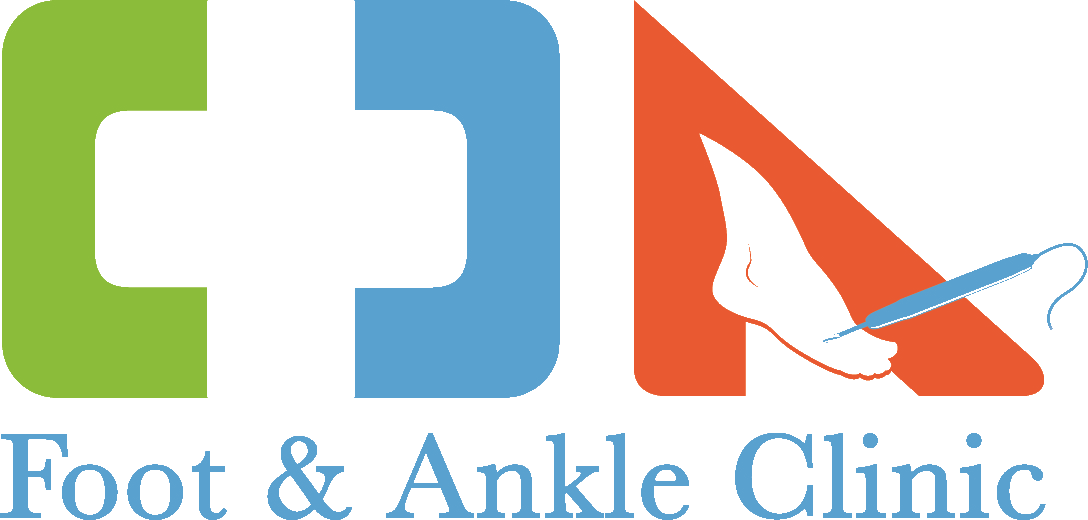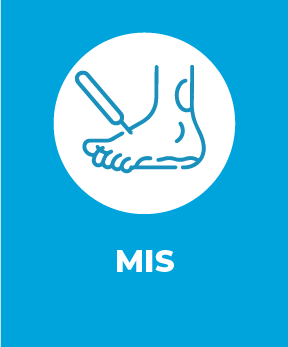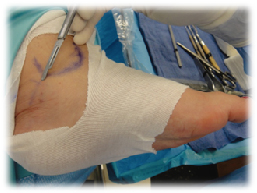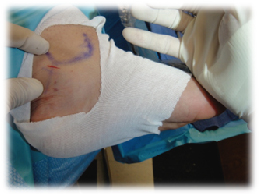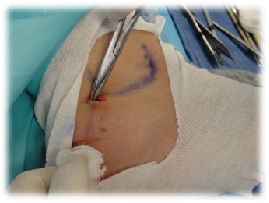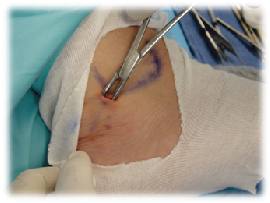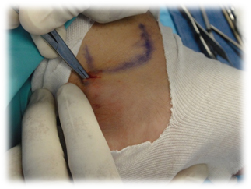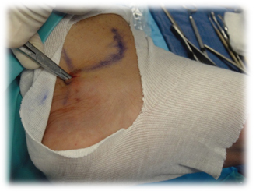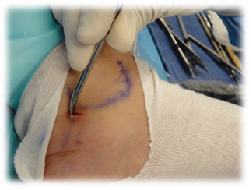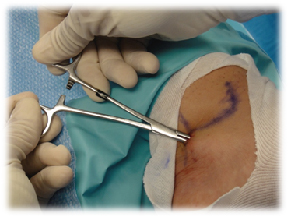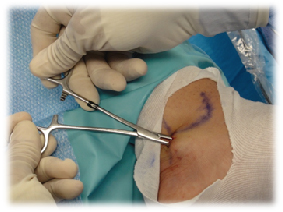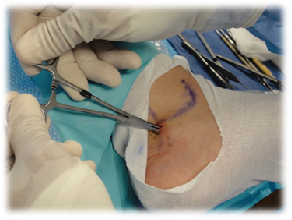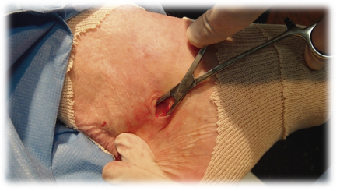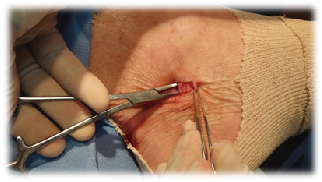MINIMALLY INVASIVE CORRECTION
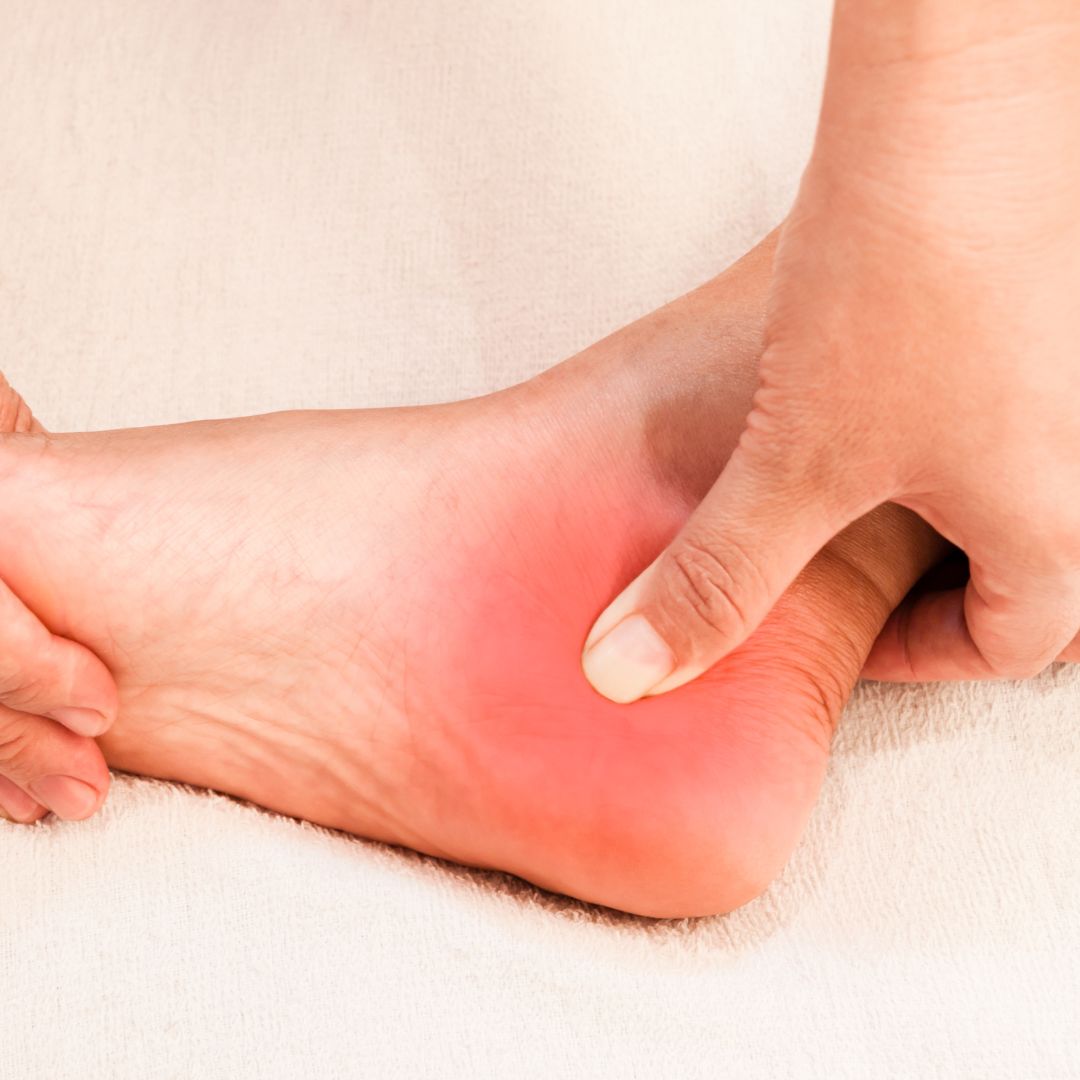
Tarsal tunnel syndrome is a painful condition that is caused by the entrapment of the posterior tibial nerve on the inside of the ankle. There are some very tight structures in this area, so there is very little room for expansion if any of these structures becomes inflamed or enlarged. This inflammation or enlargement of the nerve in this area causes the entrapment.
Symptoms include:
- Pain (often described as burning) radiating into the arch of the foot, heel, and sometimes the toes.
- Numbness including pins and needles may be felt in the affected area of the foot.
- Pain when running or when standing for long periods of time. Usually relieved by rest and often worst at night.
- Tenderness to the touch of the area under the medial malleolus.
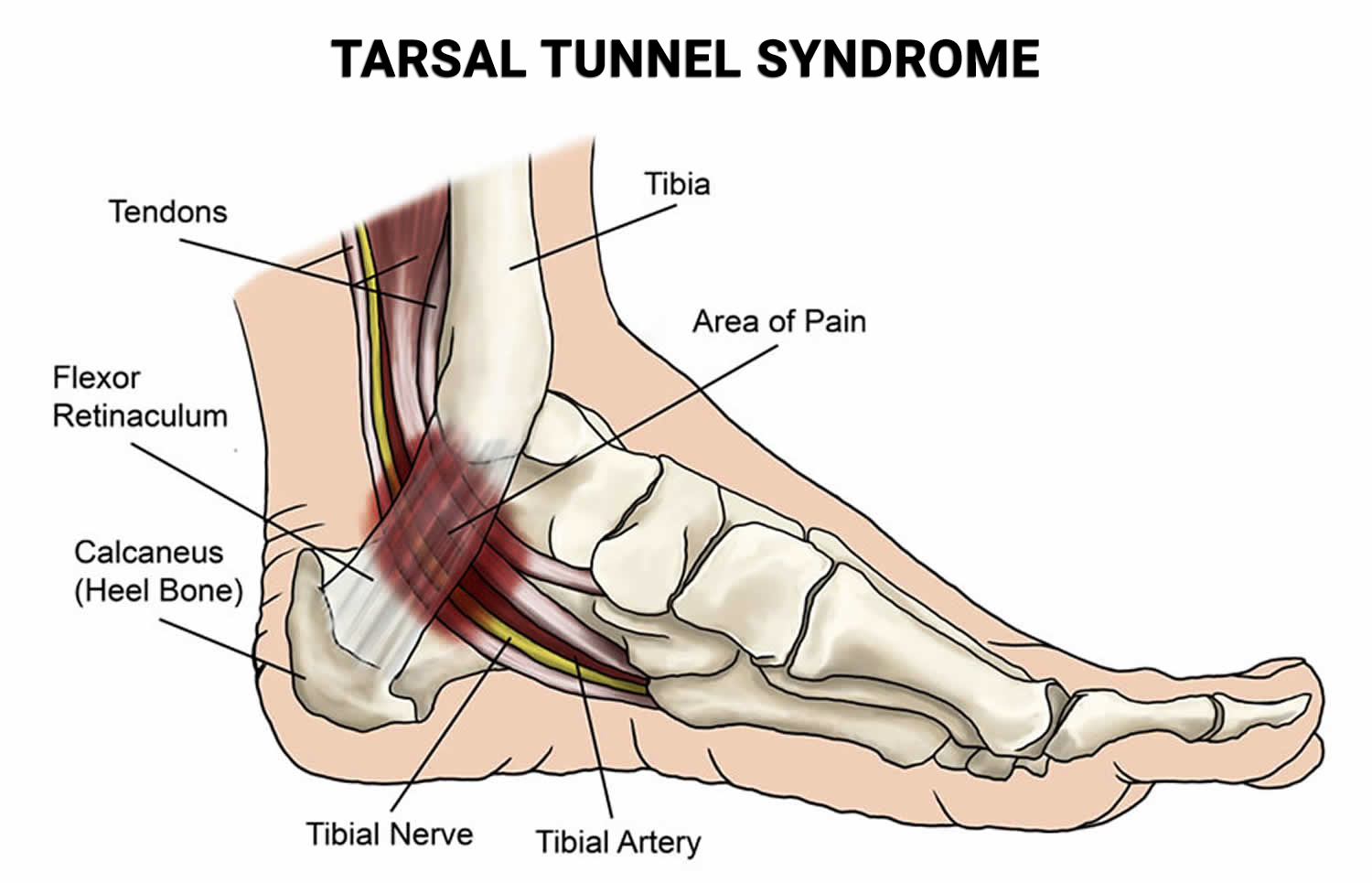
Minimally Invasive Tarsal Tunnel Syndrome Correction
Dr. Nunez does a minimally invasive ambulatory surgical technique to correct tarsal tunnel syndrome. It involves making small incision at the medial ankle area to stretch the retinaculum (a ligament in the medial part of the ankle) releasing pressure against the nerve.There is no need for a long open incision thus causing minimal injury to the adjacent tissues which results in reduced swelling, pain, and recovery time.
MIS surgeons are able to rely on a compression dressing for stabilization immediately after surgery, eliminating the need for internal fixation (pins, screws plates, etc.)
The most commonly performed MIS procedure for correction of Tarsal Tunnel Syndrome is the tarsal tunnel release, stretching the flexor retinaculum. On rare occasions if there is a growth pressing the nerve then the surgeon may need to use a larger incision to remove this growth.
Incision & Identification of the retinaculum
Placement of curved hemostat to stretch the retinaculum
Stretching the retinaculum
Optional partial incision of the retinaculum
Please call us at (208) 666-0605 or fill out the form below
to submit your information
The small surgical incisions enable the surgeon to use fine specially designed instruments to obtain the best cosmetic result.
Surgery is performed under Fluoroscopic imaging and using just local anesthetic instead of general anesthesia, making foot surgery possible for some patients who were previously considered to be too at risk for traditional surgery due to age or medical history.
There is less trauma to the tissue and surgical times are lessened with this technique, reducing pain and recovery time. Less suturing is necessary and often times no sutures are used. Postoperative patients ambulate immediately and are placed temporarily in a surgical shoe or boot to aid ambulation.
